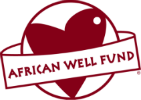 In 2009, the African Well Fund visited Ghana. Photos in this post are from that trip, taken in the village of Takyikrom.
In 2009, the African Well Fund visited Ghana. Photos in this post are from that trip, taken in the village of Takyikrom.
For the first of what would eventually be three projects in Ghana, African Well Fund, along with Mars Incorporated, partnered with Africare to launch the iMPACT Health Project in ten cocoa farming communities of the Wassa Amenfi District.

Located in the Western Region of Ghana, the district had a population of 186,257. Of the active labour force, 75.6 percent were involved in agriculture – nearly all were cocoa farmers. District cocoa farmers could earn as little as $290.00 a year, while a bag of rice that feeds a family for a month costs $45.00, or well over $500.00 a year. The maternal mortality rate was persistently high at over three times the national average. Most families live on their own farmlands, miles from health facilities. With low population density and poor road networks, transportation was often inadequate, expensive, and in some areas, non-existent.
The iMPACT Health Project sought to provide clean water and sanitation for people living in Wassa Amenfi communities. Unprotected water sources led to waterborne disease. In addition, Guinea worms, which grow up to three feet long inside a person were often found in community water sources. With little access to health care, treatment for these diseases was difficult, if not impossible. In addition the miles-long walks which women and children undertook to collect water kept them away from school, child-care, or farming and other income-generating activities.

For the first phase of the Water for Cocoa Farmers project, eleven communities were selected based on need and their prioritizing sanitation and water in their community action plans.


To improve accessibility to clean water, six wells were constructed, and another rehabilitated, each of which was managed by a newly formed Water & Sanitation committee made up of elected village members. The WatSan committees are involved in all decisions during the project, including the location of the wells, the method of construction, cash and labor contributions, the method of collection of monthly water fees, and the daily maintenance and cleanliness of the system.

In addition, the project trained Community Health Volunteers for each targeted community, each charged with outreach, providing hygiene and sanitation information for each village.
Between the villages of Juantuahkrom, Takyikrom, Jaman, Akokofe, Nkwantanum, Nsabrekwa, Essahkrom, Wiredukrom, Sewayor, Bokakore and Nyame Nnae, 5088 Ghanians were served.




